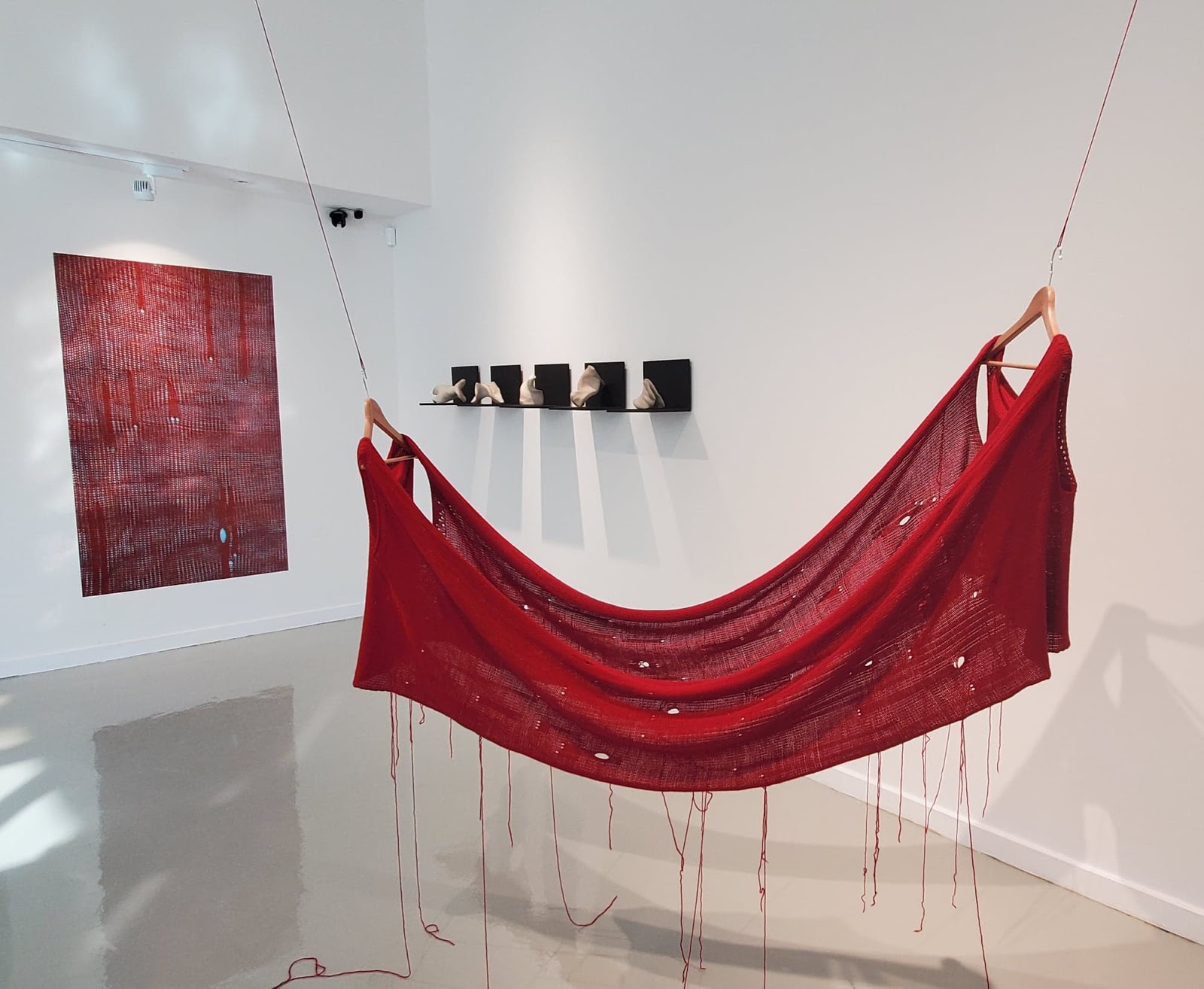The COVID-19 pandemic has ceased in-person gatherings, undoubtedly changing our preconceived ideas of connection. From Body to Body to Bodies, an exhibition currently on display at the Time Art and Culture gallery, is showcasing the work of several Montreal-based artists who tackle this socially-distanced reality. Each artist explores the relationship between physical bodies and the ways in which we remain connected virtually despite the issues of the pandemic, climate change, and political polarization.
The works at the exhibition use different modalities of sensation to address this issue. Paule Gilbert, an MFA candidate at Concordia University, focusses on touch perception in Contact Series, a collection of three multimedia sculptures. “Body-Made” is a series of six grey stoneware objects made out of clay that are positioned side-by-side to capture the organic structure of physical contact. Gilbert uses clay, a medium that relies on human touch, to convey the warmth that is created between the contact of two bodies.
“[“Body-Made”] emerged from an obsession of mine regarding the positioning of the body in space,” Gilbert said in an interview with The McGill Tribune. “[It blurs] the frontier between what is being marked and what is marking.”
The other two pieces in Contact Series are directly influenced by the pandemic, as the requirements of social distancing discourages touching. Gilbert realized that knitting could represent touching without physical contact through the complex connections of knots and strands. The first of these is an untitled installation consisting of two sheets of red wool hanging on wooden hangers on each end. The other is an inkjet close-up photo of the same red wool which allows for a clearer view of its intricacies.
“During the process of making the textile, the symbolic load of the device became more potent as I reflected on the gesture of using one thread constantly criss-crossing,” Gilbert said. “[Knitting brings] forth the idea of social fabric and its interconnectivity, [like] intersections [and] being on the same thread.”
Similarly to Gilbert, interdisciplinary conceptual artist and writer Yvetta Sunyoung Kang conveys a haptic experience, but through a completely different medium. Tenderhands is a display of 50 instructions that double as poems, such as: “To understand your fear of uncertainty.” Kang started writing them while in lockdown to cope with the anxiety that came with the pandemic.
“Because of COVID, we’ve started utilizing hands differently and treating them more as a potential contagious vessel that spreads the infection,” Kang said. “With this concern, […] I wanted to explore many and different instructions that can help ease individuals’ anxiety on [or] about their own body, especially hands.”
The instructions consist of simple steps that involve different hand movements and thought exercises to prompt viewers to form connections between their hands and what they embody.
“The more I wrote each instruction of Tenderhands, I have realized this piece definitely relates to understanding [the] biopolitics about hands […] depending on culture, class, geography and so on,” Kang said. “Some hands are forced to be exposed to more infectious circumstances than the other hands. I’ve also noticed [that] it is important at this strange time to bring up how we consider the interior as our body and the exterior as the other’s body.”
Kang includes a video of herself performing the instructions so viewers can follow along. Additionally, she invites the audience to write a word they associate with their hands, and in exchange, they can opt to receive 200 weekly instructions from her. This piece is ongoing, as Kang plans to write 400 instructions that will be available on her Tumblr page.
Despite how difficult 2020 has been, this exhibition demonstrates that remaining connected transcends corporeality. Art has the power to unite during times of isolation, reminding us that we are not alone.
The From Body to Body to Bodies exhibition is available until Nov. 14.









